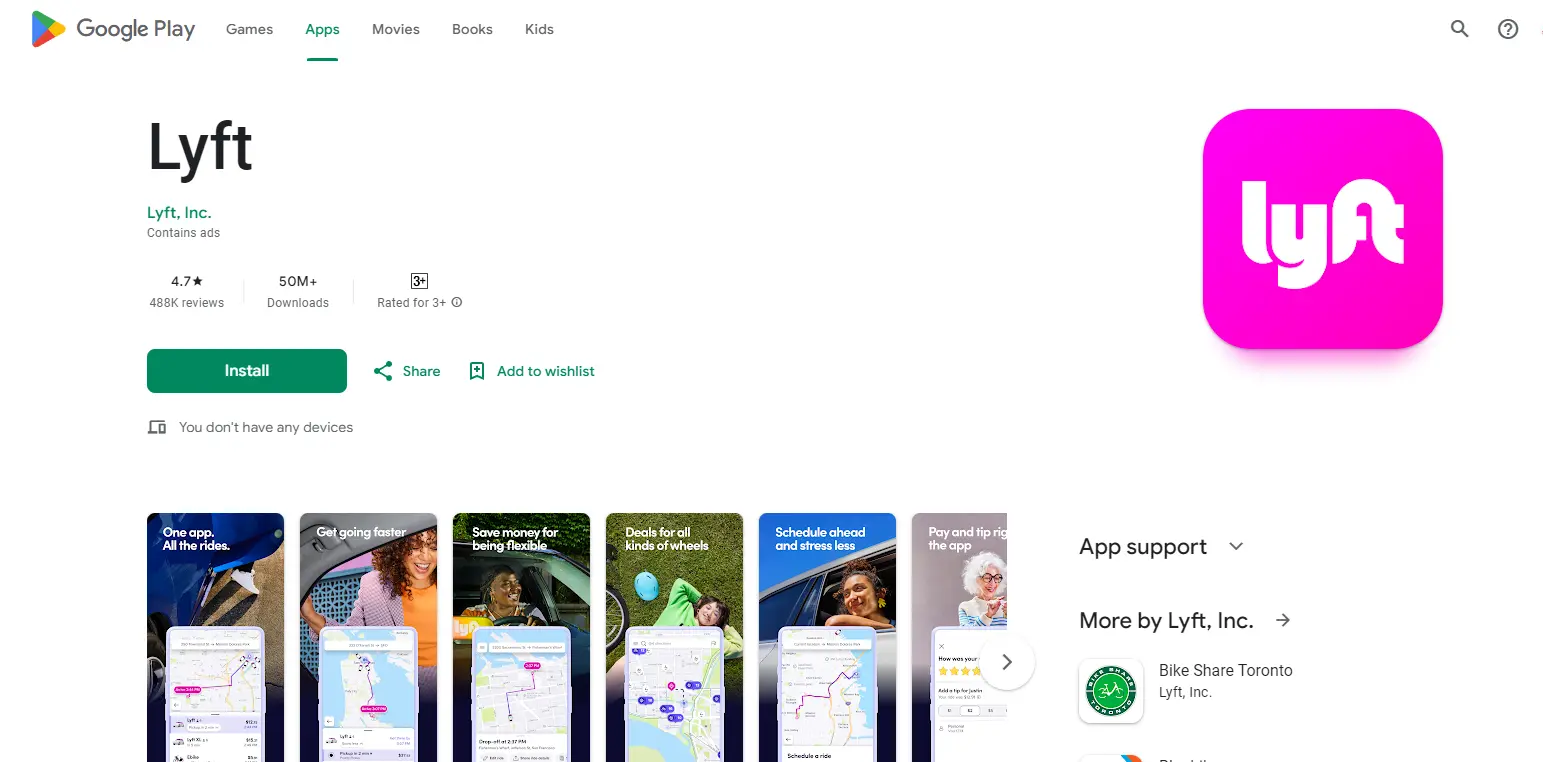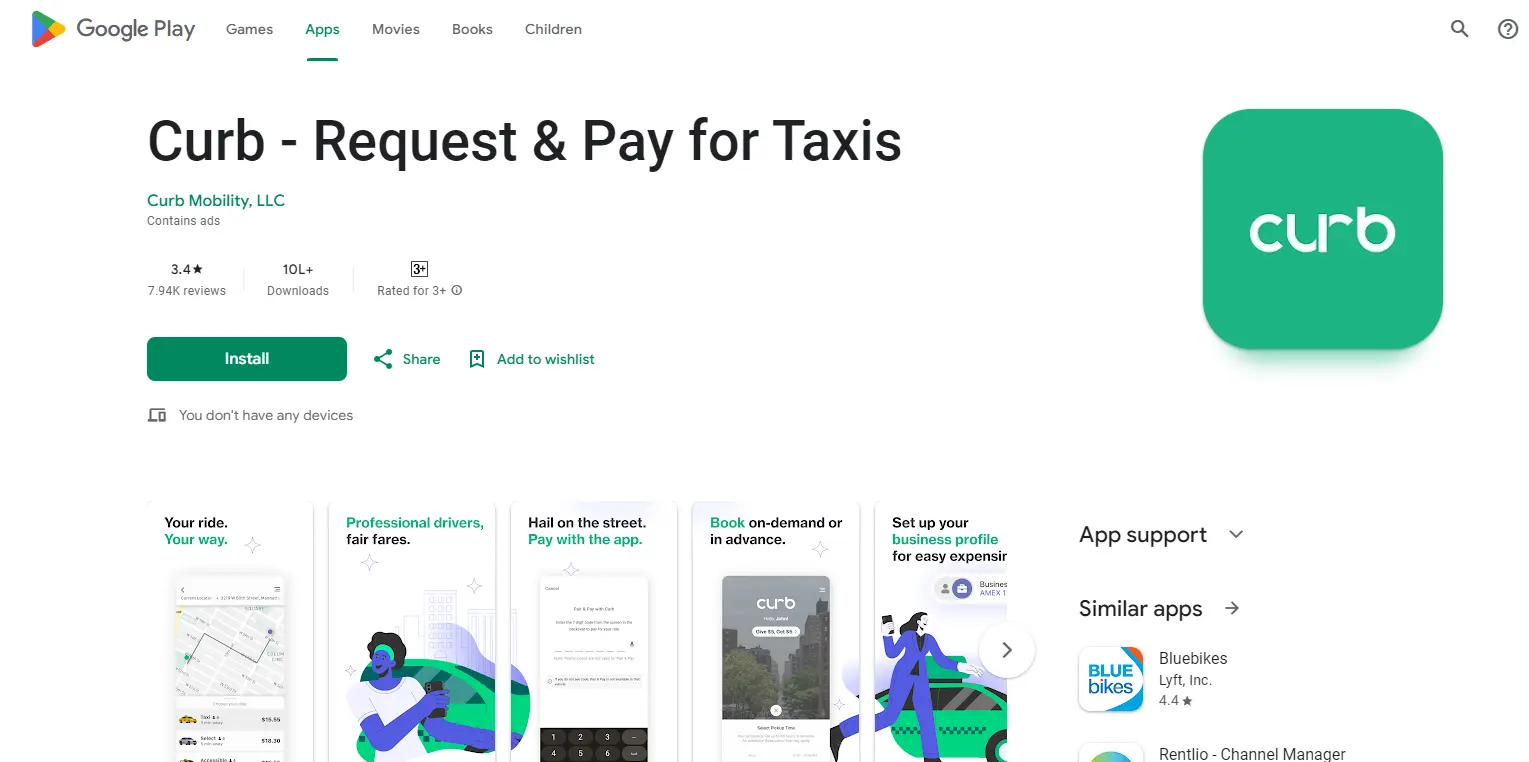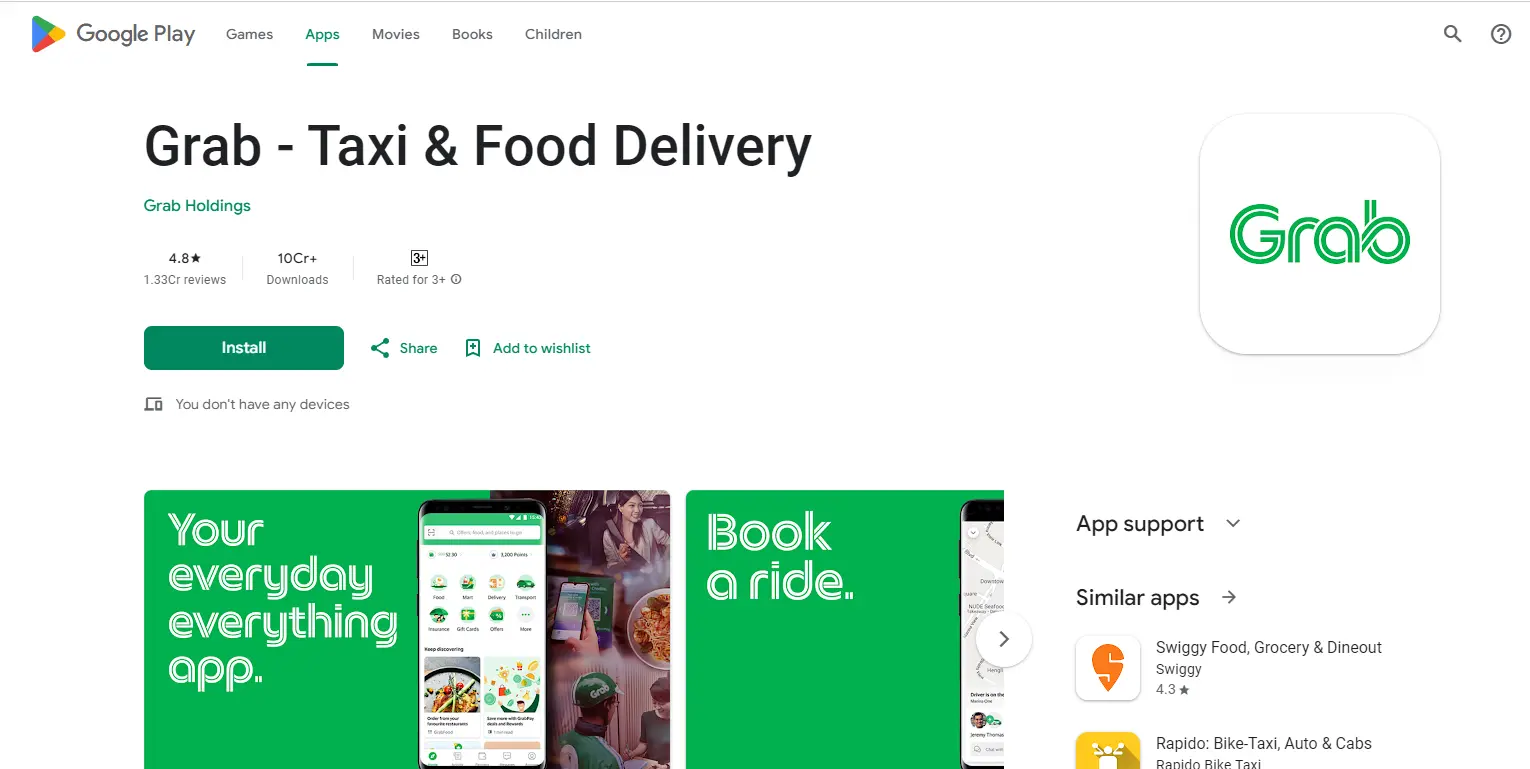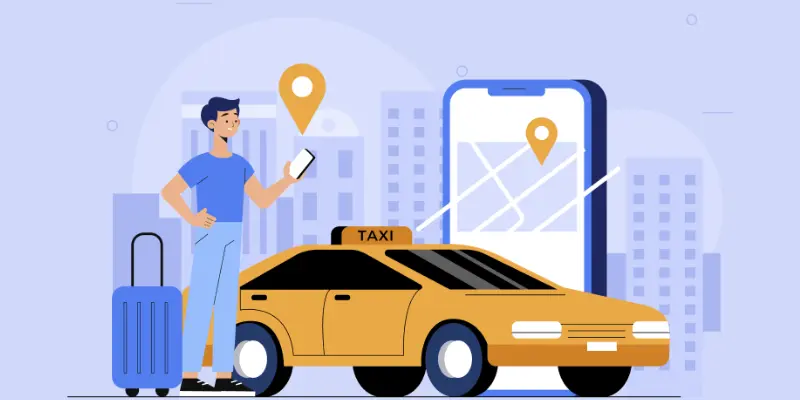The popularity of apps for smartphones is on the rise due to the increasing accessibility of the internet and the advancement of technology. There are a variety of taxi booking applications available through the Play Store, and there's always a need for the most efficient ones! As the demand for taxi bookings is rising, a number of taxi companies are eager to make their mark on the market.
Nowadays, people use a variety of transportation online, which have led to a myriad of innovations. In 2027, more than 1.45 billion people around the world will be using taxi booking services online. Technology is evolving every day and making our lives easier by allowing us to purchase food items and grocery products on the internet.
The taxi booking app is an excellent tool that is used by a variety of users around the world. It comes with a highly attractive commercial component that follows the regulations for taxi app startup companies to start operations. The blog will provide the complete guidelines to taxi booking apps development including features, benefits as well as other information. Check out this blog post for all the details.
What Are Taxi Booking Apps?
Taxi and cab booking apps are digital platforms that permit users to book and pay for taxis from drivers' fleets that own their taxi service or vehicle. They are accessible on Android as well as iOS platforms, or in a separate application.
The application that allows you to book taxis is quick to connect a customer to the driver in close proximity. That is the fundamental concept behind this kind of technology. The majority of passengers can follow the location of the driver as well as the time of his arrival, or see estimated fares for their trip and the time of arrival prior making the reservation. The user can also choose the type of vehicle they want to use or other preferences that are specific to their trip.
The concept behind this type of app is known as ride-sharing, or ride-hailing. It's a departure from the conventional technique of hailing taxis from the roads or reaching a dispatch centre to ask for one.
Taxi Booking App Landscape Overview
The year 2024 will see a range of significant trends that will impact the development of taxi booking applications. Knowing these trends is essential for businesses.
Sustainable and Eco-Friendly Rides
The shift toward sustainability is leading to an increase in environmentally friendly transport, and hybrid electric vehicles are beginning to gain importance within taxi companies. Apps for the booking of eco-friendly cars are becoming more popular with an emphasis on the environmental aspects.
AI and ML
Artificial Intelligence and machine learning transform taxi booking apps by enhancing efficiency and personalization through prescriptive analytics AI chatbots and real-time optimization of routing.
Enhanced Security
As the volume of digital transactions increase, advanced security measures like biometric authentication, full encryption along with payment processing are becoming crucial in building trust and ensuring that customers are.
Blockchain for Transparency
Blockchain technology is predicted to increase efficiency and improve transparency, offering secure transactions, as well as the possibility of decentralized services that improve the efficiency of transactions and reduce expenses.
Ride-Sharing and Pooling
The popularity of ride-sharing and pooling is increasing in popularity as eco-friendly and cost-effective transportation alternatives that attract eco-conscious and budget-conscious consumers with low-cost transportation options that lessen traffic congestion.
User Experience
Enhancing the user experience through the inclusion of options such as driver preferences and customization options is vital for increasing satisfaction of customers and loyalty.
Multiple Payment Systems
The wide array of payment options that include e-wallets, bank transfers and cryptocurrencies that are supported by blockchain technology creates new standards for security and ease of use.
Government Regulations and Partnerships
The evolving regulatory landscape and the alliances with government agencies are designed to increase mobility in cities as well as support environmentally friendly vehicles, and provide the security of our roads and ensure fairness. This has led to apps to develop with features that are standards-compliant.
Expansion of Services
Beyond the taxi booking application the app has expanded its options that include delivery of food, parcels as well as other offerings. This diversification creates new revenue streams as well as increasing the engagement of users by creating the app as a comprehensive solution to satisfy multiple needs.
These developments suggest that innovation which is focused on the user and is eco sustainable is essential in order for taxi applications to thrive. App development for mobile firms who stay ahead of these trends and continually develop their apps will prosper in the constantly changing digital landscape.
Categorizing Taxi Booking Applications
One of the most important elements to be considered when developing the application for booking taxis includes the company model that you wish to stick to.
The business model directs the process of creating apps and directly affects what taxi booking app's creation cost.
There are two types of taxi apps specifically designed for taxi booking and taxi aggregator applications.
Dedicated Taxi Booking App
This is a great model for companies with a well-established taxi service. They'd have a range of drivers and taxis.
The taxi booking app permits taxi companies to connect to the internet which makes it much easier for customers to get connected to their taxi service.
Furthermore, it gives the chance of reaching a larger client base.
The transactions happen directly between taxi drivers with no middlemen.
Customers enter their pick-up location as well as their preferred vehicle and any other pertinent information. Taxi drivers are dispatched by the taxi service to drop off customers in their preferred locations, at predetermined prices.
Taxi Aggregator App
This is the sort of model that has been adopted by taxi-booking applications such as Uber and Ola.
The app serves as a platform that allows taxi operators or taxi businesses for them to sign up their cars and offer services to their customers.
Taxi aggregators collaborate together with taxi drivers to offer transportation.
Typically, aggregators charge fees for convenience to offer their services.
This model is attainable to apply in two different ways: simple and on-demand
Simple Taxi Reservation Application These apps do not require the use of a server.
Taxi-drivers can be contacted by using a single app. Users can call and request taxis using the app.
On-Demand Taxi Booking Application: This application requires an internet connection for it to function. It requires two applications: one for passengers, and one to be used by drivers.
Taxi business online is expanding rapidly due to apps that utilize various business models to grow their taxi service.
It is predicted that by 2025, the annual growth of the global ride-hailing market will reach $126,521 million! This means that now is the ideal time to make a decision on the growth for an on-line taxi service.
Top Reasons to Build a Taxi Booking Application in 2024
Demand for booking taxi services has been growing over the last few years.
-
The ride-hailing and taxi industry is predicted to generate US$165.60 billion revenue by 2024. The market is anticipated to expand by 6.83 percent for the next four years, and then eventually reach an annual CAGR of 2024-2028.
-
According to research based on the study, the taxi booking app market is expected to expand rapidly. The estimated value of taxi apps in 2026 is $150 billion.
-
Uber is among the most popular taxi ride-hailing applications. It generated between $36.5 billion between $36.5 billion and $37.5 billion, compared with StreetAccount's prediction of $36.5 billion, and the adjusted EBITDA (EBITDA) that ranges from $1.18 all the way to $1.24 billion.
-
The growth rate of the market is predicted to be 5.03 percent (2023-2026) in 2023, and the market size is expected to be $390 million by 2026.
-
Additionally the number of users using the industry is predicted to rise to 1666 million by 2026, which indicates that there is a need to expand the development of taxi booking apps.
-
The number of users is currently about 20 per cent (2023) as of 2023 and predicted to hit 20% by 2023. This is an anticipated rise of 21.1 percent by 2026.
-
If we examine the amount of people who use these programs and the value they provide the average earnings per user is approximately $205.92.
-
Taxi and ride-hailing categories could make up around 50 percent of the total revenue in 2026.
-
These figures are only estimations. Actual results may be greater than these because of developments and the future scenarios the world might be facing in the coming years.
Steps to Develop a Taxi Booking App for Success
In order to create a simple and pleasurable experience for passengers and drivers, a mobile app to book taxis comprises several crucial steps. The steps are:
Conceptualization of Ideas
Find out the primary goal of your app. Choose the market you wish to reach, the distinct features that will make your app different from the rest of the apps and what features draw customers.
Market Research
Learn about the preferences of customers in relation to rival apps, as well as taxis specifically. Be aware of the needs of the market prices, pricing structure, as well as technological advancements. To streamline the process and boost efficiency, you can get advice from developers of taxi apps. They will conduct market research and provide the most efficient solutions for your needs.
Define the Functions and Features
The features your app has to offer. This could include profiles, ratings, drivers reviews, live tracking travel planning, payment integration and other features. It is crucial that you follow this method in order to create an application for booking taxis on demand.
Technical Architecture
Architectural design for applications takes into account several elements, like the design of databases and servers as well as server APIs, the technology stacks that you'll be using (such as hybrid frameworks or native development tools, for example).
Frame and Prototype Development
Prototypes as well as wireframes are required to show the User Interface (UI) and the user interface (UX). They help improve usability and appearance prior to when the development process gets underway. If you're developing an application that is downloaded at any time ensure that you follow this step.
Develop
Employ an online taxi booking app development firm to create apps using sketches and prototyping. The front end, the front (user interface) as well as backend (server-side logic) are coded to perform functions. Integrate check-ins, booking vehicles, driver assignment check-in, driver assignment, and payment processing into your routine.
Testing and Quality Control
Review the application with care to find flaws, glitches as well as usability issues. Check the app's functions including integration, usability, and compatibility to ensure that both drivers as well as passengers have a pleasant experience.
Deployment and Launch
After testing thoroughly, your app can be uploaded to the Marketplaces on Play (such as the Apple App Store or the Google Play Store). To keep your users intrigued by the app, you can promote it on social media. To improve the app and monitor its performance and collect user feedback.
To succeed in arranging taxis, it must be maintained with constant maintenance of upgrades, updates, and enhancements based upon the feedback of customers and changing market trends. Make sure that your app is compliant with the privacy laws and rules.
Advanced Features to be Included in Taxi Booking Applications
A more advanced app will require more features that aren't accessible in a standard app. The possibilities of technology are limitless and taxi app developers are able to test their ideas to make their app stand out.
Multi-language Compatibility
If you're looking to expand your business internationally, developing taxi apps that work with different languages is crucial. Customers who aren't native speakers are able to select which language the app supports or the most suitable one.
In-App Wallet Integration
Modern taxi services provide an in-app wallet feature. With this feature, passengers can transfer funds into their wallets on account and pay for taxis without having to pay cash or enter credit card numbers every time.
Voice Command Integration
The voice command feature allows passengers and drivers to communicate via the taxi reservation app by using natural technology to process the language (NLP) technology. It will provide a more comfortable and user-friendly experience for the user. For instance, users could request an appointment simply by speaking the request aloud instead of typing it in.
Carpooling/Ride-Sharing
If you choose this option, those travelling together may join a ride and share the cost. Drivers can pick up passengers at a time that doesn't affect the location of drop-off for other passengers. This type of transport helps customers save money and decrease waiting times for all who join in. From a sustainability perspective carpooling may help to reduce traffic congestion and carbon emissions.
Top Taxi Booking Applications in the Market
With the fierce competition in the business of ride-hailing It's not unusual to seek out the advice of the company's leaders when looking at the best method to develop an app that can be used by taxi drivers. Uber, Lyft, and Grab have the upper hand in the taxi market and it's essential to study their strategies and techniques.
1. Uber
.webp)
UberCab was established in the year 2009 in 2009 by Garrett Camp, was the first ride-hailing company. Uber currently operates in over 630 cities, and is growing. One way the expansion is taking place is through the acquisition of related services. In the year 2019, Uber paid $3.1 billion to acquire Careem which is a Middle Eastern taxi booking app.
Uber has evolved, and the expenses associated with the development of its app are difficult to calculate. According to NextWeb, based on Uber's first funding rounds the costs of constructing the Uber App, which consists of taxi driver applications and an app for riders could be between $1 million between $1M and $1.5M.
The creation of Uber's taxi application required an enormous amount of money. Its initial funding was about 1 million dollars. The money came from nine investment investors. Imagine what this could mean: Uber Technologies has raised more than $22 billion worth of funds to build its taxi booking app in the past nine years.
2. Lyft

The Lyft application was launched in 2012, one month following Uber. It was first known as Zimride, a city-wide ride-sharing service that connects drivers and drivers via Facebook.
With over 200 major cities throughout the United States, Lyft's taxi reservation service is regarded as a direct competitor to Uber. The distinctive thing about Lyft is their rating system which ensures that only the best chauffeurs are hired. Additionally, it's important to note that Lyft taxi service is covered with a million dollars worth in liability coverage. Furthermore, Lyft is thought to be cheaper than Uber and Uber, meaning that you'll have to pay about $12 as opposed to $16 for Uber.
3. Curb

Curb is a distinct taxi booking service that is located in the United States. The collection comprising more than 50,000 taxis as well as hired vehicles are scattered across all sixty-five US cities. Customers have three options when they book taxis: "ride now," "ride later," and "pair and pay."
The main difference between Uber Curb from Uber Curb can be found in the major distinction between the Uber app and Curb applications is the Curb application Curb application doesn't provide the pricey surge that Uber has been accused of. Surge pricing is the term used to describe pricing adjustments based on demand at a certain date. That means a trip on Curb is cheaper while the taxi application is also the greenest service. Along with the price for each trip, customers also receive the $1.95 commission.
4. Grab

Grab is one of the most well-known taxi booking apps across Southeast Asia, with Singapore as well as in the Philippines, Malaysia, Indonesia, Thailand, and Vietnam. The app for taxis offers various payment options and travel options (a cash or credit card in addition to credit cards). Additionally, Grab also provides numerous options for food delivery and other delivery services that are popular with sellers and restaurants.
Cost of Developing Taxi Booking Application in 2024
An entry-level taxi booking application can vary between $25,000 and $50,000 for a single platform. The process of developing an app that runs on the two platforms iOS and Android can cost anywhere between $50,000 and $100,000.
Additionally, advanced functions including live updates on rides as well as in-app communication in-app communication, fare calculation, as well as various payment options, can affect the total cost.
It is crucial to keep in mind that these are just estimated costs, and the final price could be substantially different depending on the specific requirements for your particular project. If you're trying to get an accurate estimate then you may contact us to employ skilled developers to handle your needs and provide you with an estimate that is consistent with your specifications.
The Key Takeaway
This article has provided guidance in the process of creating an application for booking taxis in 2024. It requires a meticulous plan that includes market research, the selection of technologies, users testing of design, integrating elements, design, as well as ongoing monitoring and enhancements. It is therefore essential to determine your target customers and your unique selling point, choose the right technology stack, design an intuitive user interface, integrate essential features, thoroughly evaluate the app, as well as continuously evaluate and improve the performance of the app.
Are you considering developing an app that allows taxi bookings for your company? Create your taxi company into an online business by creating an innovative application that will increase the potential of your app. JPLoft is a top taxi booking app development company,recognizes the challenges you'll confront in a competitive marketplace and the necessity to maintain an edge over your competitors. Our application developers who specialize in taxi booking apps are experts in the creation of robust user-friendly, feature-rich taxi booking software that can aid in streamlined business.









Share this blog